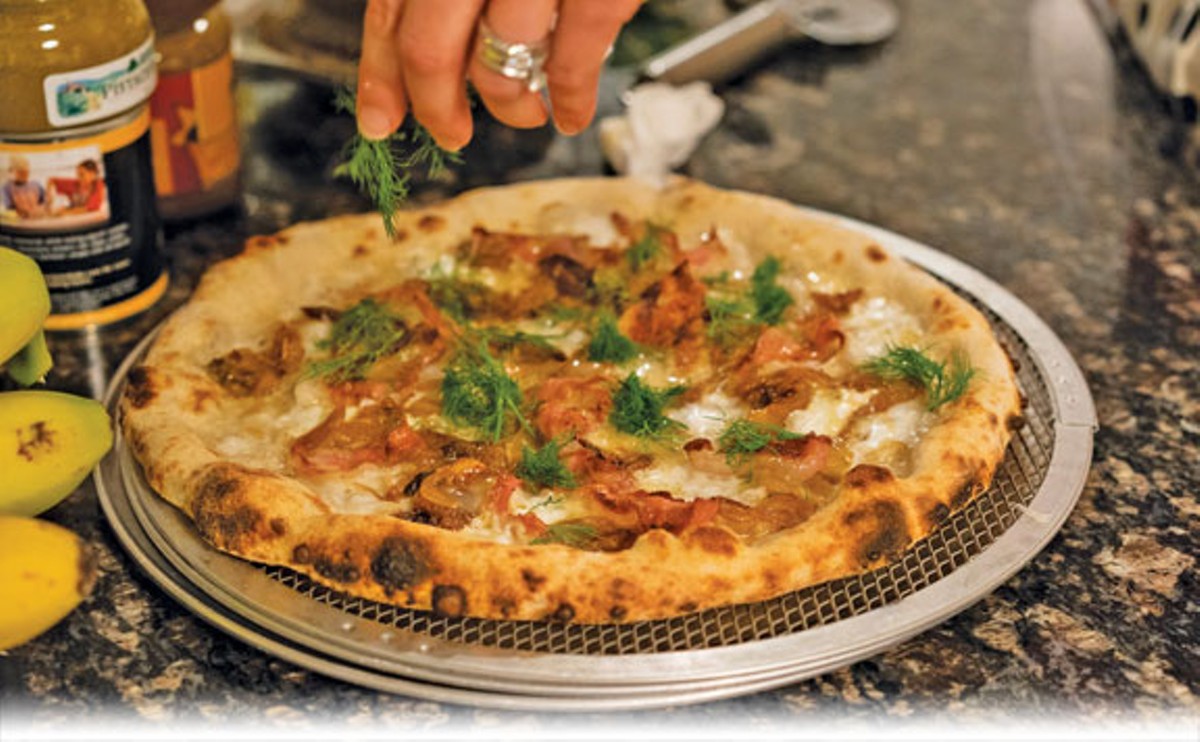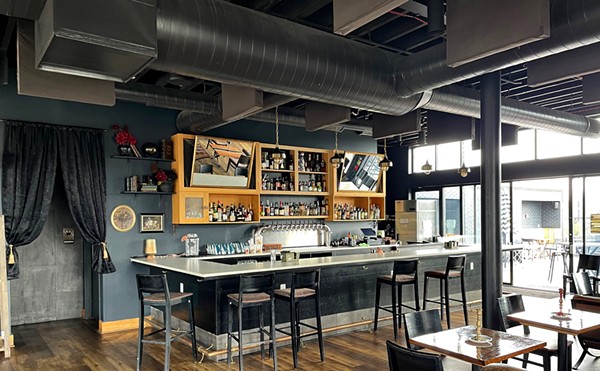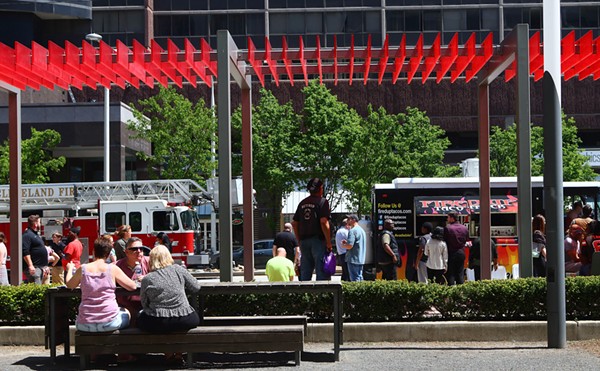I don't often get envious; I'm perfectly content with what I've got. But then I walked into Cal Carlisle's backyard and for one brief and shameful moment, I despised him. He had something I coveted and, worse, knew I would never have.
Rising to a height of 11 feet, clad in attractive native stone, capped with a towering stainless flue, and emitting more heat than the business end of a top-fuel dragster, Carlisle's wood-burning oven is a thing of beauty. Built of his own hands over the course of three years, this tour de force of design and construction was brought into being with a single purpose: to make the best pizza in the world.
Carlisle, a landscape architect, is a member of a small but passionate band of obsessed perfectionists known as pizza makers. Like beer brewers or barbecue pit masters, theirs is a quest to be the best or not do it all. Hours are spent fixating over wood, starters, doughs and temps, and if you ever find yourself in their company, god help you.
"I eat pizza all over the country and I can tell you that, much to the annoyance of my wife, pizza people can talk for hours about the subject," Carlisle says. "You can meet someone, start talking pizza and it's like you've known each other for 20 years."
John Tutolo recalls the precise moment he joined the club. The year was 1998 and he found himself in Phoenix for work. He settled in for a meal at Pizzeria Bianco, the now-famous shop run by Chris Bianco, the James Beard Award-winning chef who jumpstarted the American artisanal pizza movement.
"When I ate at Pizzeria Bianco I about fell over," recalls Tutolo. "I said, 'This is crazy; I gotta learn how to make pizza like this.'"
Tutolo returned home and immediately got to work. He bought all the right books, started messing around with starters and doughs, but he was only getting so far. His doughs, while decent, were miles away from those thin, crisp, chewy, poofy char-pocked crusts that he'd died over back in Phoenix. The barrier, he determined, was his conventional oven.
"I realized I needed a wood-fired oven," he says.
Designed in Italy and built onsite by a mason, the wood oven would be Tutolo's classroom for the next eight years, at which point he finally felt confident enough in his pizza making abilities to open his Kirtland restaurant, Biga Wood Fire Pizzeria.
"I told myself that I can't even open until I'm at least as good as Bianco. Otherwise, there's no point."
You might call Biga's pizza style neo-Neapolitan. Tutolo doesn't adhere to the strict rules of the Vera Pizza Napoletana (VPN), which dictate everything from oven fuel (wood) to flour type (Caputo 00) to tomatoes (Italian plum) to cheese (mozzarella di bufala). To him, importing all those ingredients from Italy runs counter to the logic that created the rules in the first place.
"My rule of thumb is if my grandparents came here to open a pizzeria, what would they do?" Tutolo asks. "They'd find the best available products as close to home as possible."
Like all pizza makers, Tutolo controls every step of the process, from fire management to dough spinning to the all-important bake. Over the course of a single night, he and his small team will send out 160 pizzas. When your oven is between 780 to 1000 degrees, each pie bakes in just 90 to 120 seconds.
"Within 10 seconds you should see a nice push; that thing will blow up right in front of you," Tutolo says of the dough. "The most important part to me is spinning out the dough. If you overwork it you lose all that fermentation that has built up. I treat them like little clouds of air."
You might call Marc-Aurele Buholzer the pizza purist. The name of his Cleveland Heights shop says it all: Vero, or truth. He adheres to the rules of pizza napoletana as if they were commandments passed from on high, working within a canon of precepts passed from generation to generation.
"I feel like there's a righteousness to it; it bases you somewhere," he says while getting his fire going. "I'm held by these techniques and ingredients. Now, what can I do with them?"
That dedication to authenticity and craft is behind the shop's somewhat controversial "no take-out" policy. In addition to the basic concept of supply and demand — "I can't make any more pizzas" — is the elemental notion of quality.
"I come in and work 13 hours a day every single day. There is this repeated, continued commitment to excellence. And then I put my pizza in a box and you drive around with it? The customer is not receiving the product I intended to give them."
Back in Cal and wife Regina's backyard, the first pizzas are starting to come out of the oven. One is topped with pistachio pesto, fennel sausage and pecorino, while another comes bearing guanciale, braised fennel and fennel pollen. They are picture-perfect. And then, just like that, they're gone.
For Carlisle, who built a $4,000 backyard pizza oven with poker winnings, and folks like Buholzer and Tutolo, the journey is as rewarding as the destination. Sure, the pizzas taste great, but there's also joy in doing good work, mastering the mechanics, and being one with the process.
"My hope is that at 85 years old I'm still making pies, totally zenned out, and at peace with it all," says Buholzer.










